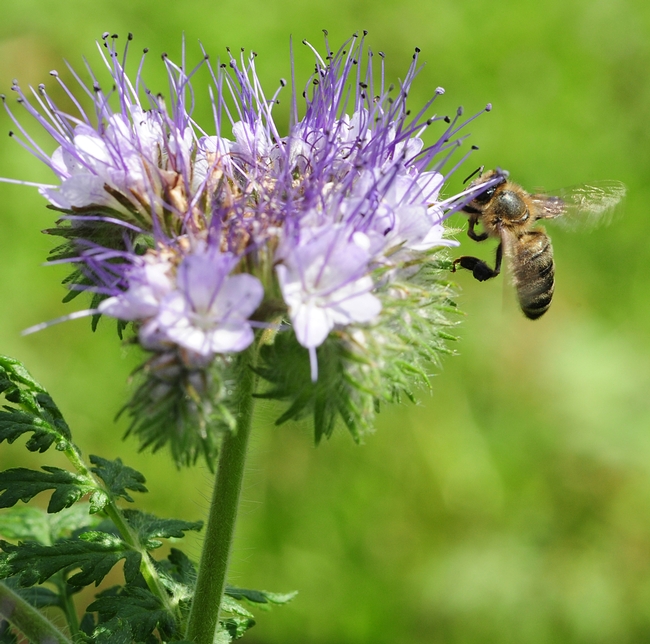The best of the best
When you drive around Yolo County farmlands, you may see them: a colorful mix of native forbs meant to attract bees and other beneficial insects.
What's a forb? A forb is a broad-leaved herb (as opposed to grass) that commonly grows in a field, prairie, or meadow or alongside farmland.
What's the best mix of native forbs?
Native pollinator specialist Neal Williams, assistant professor of entomology at the University of California, Davis, and research associate Kimiora Ward are researching which native forbs perform the best.
So far, the plants that have performed the best in their Yolo County trials are:
- Phacelia tanacetifolia,known by its common name, lacy phacelia
- Eschscholzia californica, California golden poppy, the state flower
- Lupinus densiflorus, golden lupine
- Lupinus succulentus, hollowleaf annual lupine or arroyo lupine
- Lupinus formosus, summer or western lupine
- Phacelia californica, California phacelia or rock phacelia
- Trichostema lanceolatum, vinegar weed
- Grindelia camporum, Great Valley gumplant
- Helianthus bolanderi, Bolander's sunflower
Take the lacy phacelia. You often see it planted along crop fields where it is known as a good bee plant. It attracts beneficial insects such a honey bees and syrphid flies (aka hover flies), adding a double bonus to the farmer's land. The syrphid fly is a good biological pest; in its larval stage, it gobbles aphids.
The UC Davis researchers' grant, "'Development and Validation of Protocols for Assessing Functioning of Pollinator Habitat Plantings for Agricultural Settings," is funded by the U.S. Department of Agriculture and is aimed at improving pollinator habitat plantings.
This research should prove invaluable.
As Williams said: "Recent declines in honey bee populations and the threat of losses in pollination service to economically important crops has raised awareness of the importance of restoring and conserving native bee diversity and abundance."

Honey bee heading toward lacy phacelia. (Photo by Kathy Keatley Garvey)
